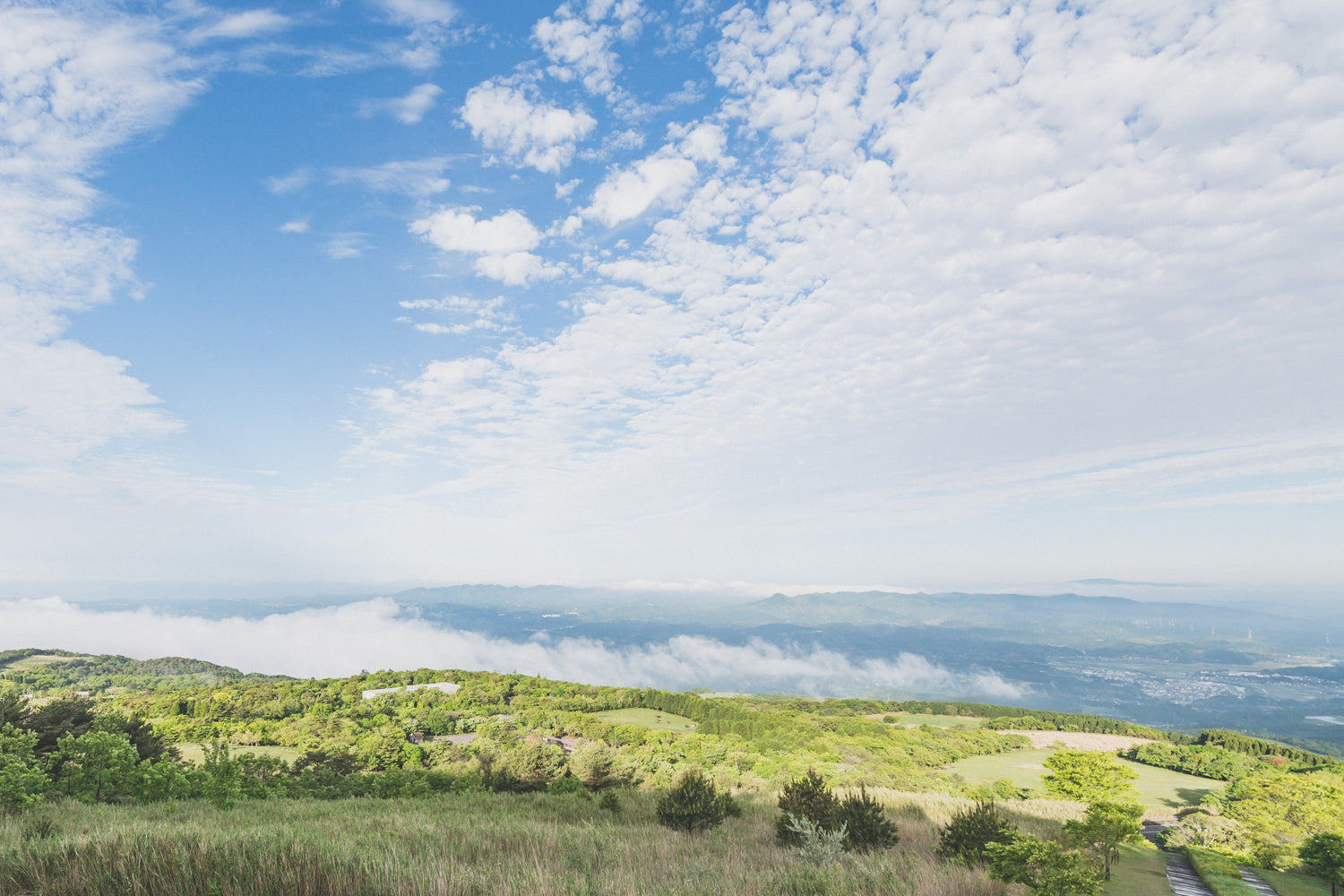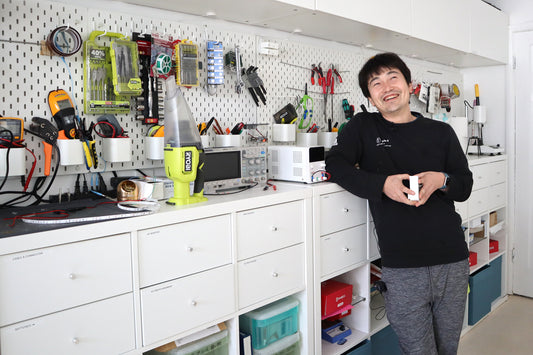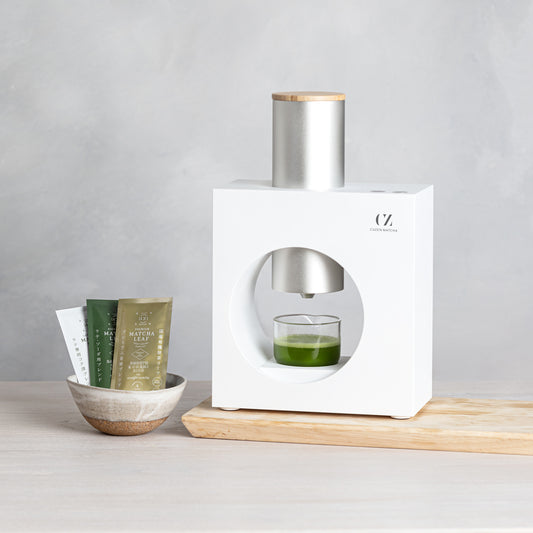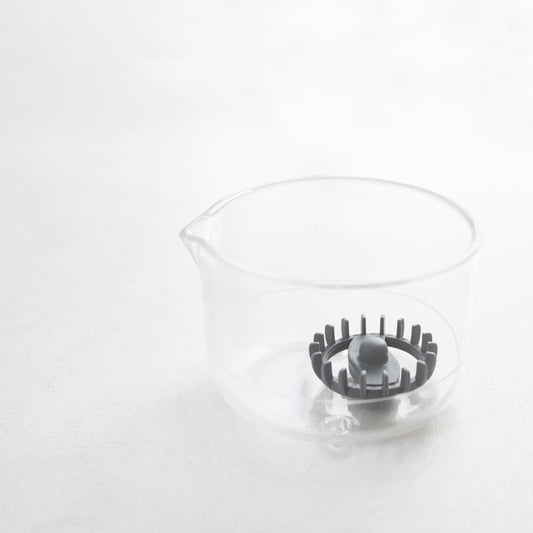

Single origin matcha
The term "single origin" seems self-evident, but its merits are not. The term is regularly seen on coffees, chocolates, spices and wines. To understand this designation, it’s helpful to first understand blended tea (the most common kind of tea).
Contents
- Why blend?
- What is single origin?
- Cuzen’s Single Origin selections
- A suitable choice for ceremony
1. Why blend?
A blended tea comprises two or more tea cultivars that, together, offer a complementary set of characteristics. To compose a blend, tea masters taste numerous leaves from a number of farms or regions. Then, they make selections based on the desired flavor, aroma and color profile of the imagined tea blend.
This process can enhance and stabilize the flavor of a matcha. It allows blenders to create consistency from year-to-year, composing blends based on changing seasonal varietals. It can highlight certain notes and can quiet others. It is similar to a painter’s process of creating the precise color needed for a vivid sunset painting. The painter remembers an exact color and adds a little of this and that hue until it matches his or her recollection. The difference is, a tea master is creating a profile that engages multiple senses with developing stages: taste, mouthfeel, aroma, vibrancy and even the way these elements unfold. It is easy to see how such an art would require training, study and experience.
Indeed, tea blending is a mastery that requires years of training under a tea master. Similar to the artistry of wine and coffee blending, tea blending is a highly-specialized craft that some masters have studied from childhood. Despite the technique and intention passed down with devotion, through generations of teachers and students, not everyone has safeguarded this tradition. It is now common for companies to use blending as a way to cut production cost rather than to offer an elevated tea composition. We hope that informing tea drinkers will allow them to make better choices and to support the companies honoring our rich customs.
2. What is single origin?
Matcha is considered single origin when the matcha leaves were all grown in a single place. The place could be as large as a country or region, as big as a prefecture, or as small as a family farm. Often but not always, the origin is the same as the name of the tea. For example, Uji matcha is grown in the historical Uji area (currently Kyoto, Nara, Shiga and Mie prefectures). However, not every tea labeled with a region is single origin. Some teas are named after the place where they were blended.
Single origin does not indicate the leaves came from a single harvest. A single harvest comes from one harvesting season. Single origin is also not the same as single batch tea. Single batch is made of leaves that went through the entire production cycle together. Here is a glossary of terms for quick reference:
Glossary
Single origin: A collection of leaves that come from one location
Blend: A tea mixed with more than one cultivar from different locations
Single harvest: A tea of leaves collected from a single harvesting season
Single batch: A collection of leaves that went through one production cycle together
Although certain reputations and standards of quality are connected to different regions, and sometimes there are a few common characteristics found in teas from a given region, tea qualities are not generally consistent across a location or even from year-to-year. Maybe a certain region is known for bright green varieties because of environmental factors, for example, but most characteristics vary based on annual conditions, the particular techniques of different farmers and many other determinants. This means each particular cultivar from each region is a notable occasion, worthy of annual celebration, a special vessel and even a reason to gather.
Single origin tea is often cherished due to the reputation of its origin. There are a number of places in Japan that are famous for hosting centuries of cultivation knowledge and producing high-quality tea. Certain landscapes or islands are also known for their soil type, climate or other environmental factors that contribute to high-grade tea varieties.
Kirishima in Kagoshima Prefecture, for example, is home to some of our Single Origin selections, and is also a well-known place for growing tea. It has abundant rainfall, ocean fog, plenty of sunshine and rich soil fed with volcanic ash. Kirishima has a high altitude, which makes for an environment with few pests, and thus, simplified organic farming.
Knowing where a set of tea leaves comes from also allows the drinker to know about the culture, the landscape and the sustainability that is attached to their tea. The smaller the location is, the more easily a person can ascertain this information. Every part of the process, from seed to sip, matters in the tea-drinking experience. With knowledge of a specific sustainable farm, one can more deeply feel the calm generated by a warm bowl of matcha or can call on lush mountain imagery that is as vivid as the foamy tea in hand.
Single origin teas are unique because they have strong and unmasked characteristics. The sensory palette of a single origin tea is a solo actor on an empty stage. Each smell, flavor, color and finish is wholly credited to that one variety. This is in contrast to tea blends, which operate more like multiple actors in dialogue, reflecting and complementing the qualities of each other based on the directing tea master’s wisdom and preferences. (In the context of the tea industry, those qualities are largely based on the whims of a target market.) There is something elegant and skillful about presenting a sophisticated, complex taste from one solitary place. It celebrates the beauty offered naturally, in its most original form, unveiled and unaltered.
3. Cuzen’s single origin selections
Similarly, our Single Origin Matcha Leaf selections are unique, with strong and consistent characteristics, based on the farm locations from which they were sourced.
Of our seven different 2024 Single Origin teas, we have three from Kirishima, two from Tenryu, one from Uji and one from Toyota. The cultivar offerings are even more diverse, with three okumidoris, a goko, a tsuyuhikari, a komakage and an asanoka tea.
Like people with similar genetics growing up in different environments, cultivars vary depending on a number of factors, including the quantity of sunshine a farm receives, whether the farm is high-altitude or in a river valley, and whether the soil is fed with volcanic ash. And though the ecosystem has a big effect on the flavor notes, local traditions also impact your final cup of tea. For example, a single origin from Uji has distinctive notes due to a local roasting style.
4. A suitable choice for ceremony
“Oiemoto-okonomi” is the Japanese term for “the grand tea master’s favorite” and refers to a treasured, high-quality matcha leaf used for ceremony. Because the tea ceremony is characterized by simplicity, nature and beauty, it follows that the oiemoto-okonomi is often selected from only one farm, making it even more special. Certainly, a single origin tea has strong and direct qualities, unadulterated with other cultivars. The localized notes and aroma become centered and easily identified when made into “koicha,” or “the thick, ceremonial tea.” While we don’t perpetuate the myth of a ceremonial grade standard, we do recommend using single origin for a tea ceremony. Our Matcha Maker features a grind-only setting so the freshest powder can be hand-whisked immediately after whole leaves are ground. The convenience of the Matcha Maker’s whisking component is perfect for a morning routine, but it’s also important to take time and savor the slower, thoughtful ritual of tea.
Related products
-
Organic Matcha Leaf packets
Regular price From $17.00USDRegular priceUnit price / per$17.00USDSale price From $17.00USD -
Matcha Maker Starter Kit
Regular price $299.00USDRegular priceUnit price / per -
Organic Single Origin Matcha Leaf
Regular price From $45.00USDRegular priceUnit price / per -
Whisking cup
Regular price $15.00USDRegular priceUnit price / per













